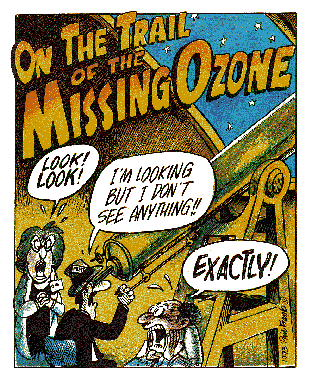 > ENC Master > Climate Encyclopaedia > Upper Atmosphere > basics > 2. Ozone hole
> ENC Master > Climate Encyclopaedia > Upper Atmosphere > basics > 2. Ozone hole
 |
|
|
|
Higher AtmosphereBasics |
Unit 2
|
|
As fascinating as ozone itself is the history of the discovery of the ozone hole, the understanding of the chemistry behind it and the counteractive measures taken, as well as the hope, that the hole may close again. On the basics level we explain it without using too much chemistry. The discovery of the hole In the 70th of 20th century the ozone layer has been observed from the British Antarctic Survey Station and a strong decline in ozone concentration has been measured. Legends entwine around the discovery of the hole.
|
It is told that the first measurements in 1985 showed such low values, that the observing scientists did not believe in their instruments and the dramatic development has not been published, before newly installed instruments confirmed them. Also, the "total ozone mapping spectrometer" TOMS was already observing the ozone layer from the space. However the hole, that's what legends say, has not been discovered, because values below a certain limit have been automatically assumed as error value. Later, the processing of the raw data confirmed what nobody wanted to believe. Within a few years very intensive research began, former warnings about the potential impact of chlorofluorocarbons (CFCs) have been rediscovered and their reduction and finally ban have been fixed in the Montreal Protocol and further treaties. The ozone hole was the first case that humans became aware in a dramatic way, that we are able to disturb the world climate system on a global scale. Also for the first time a quick world-wide response followed.
|
|
About this page:author: Dr. Elmar Uherek - Max Plack Institute for Chemistry, Mainz
|

